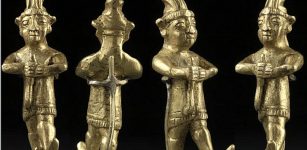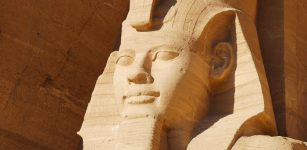Secrets Of Quipu – One Of The Most Mysterious Phenomena That Existed In Odd Number Of Dimensions
MessageToEagle.com – Incan Empire – that stretched for over 2000 miles from the north to the south and had a population of an estimated 10 million people – was the largest empire in pre-Columbian America.
To run the empire, the Inca had a sophisticated and organized government. Yet they had no written language, but instead a curious invention, a form of non-verbal communication written in an encoded language similar to the binary code used by modern computers.
A quipu (or ‘khipu’ – (in Quechua ‘knot’) was a series of strings with knots. The number of knots, the size of the knots, and the distance between knots conveyed meaning.
Each sovereign Inca formed an ayllu or “gens” of his descendants, who preserved the memory of his deeds in quipus, traditions and songs down and learnt by heart. It is fascinating to see what details may be recorded on these cords, for which there are masters like our writing masters.
Gary Urton, professor of anthropology at Harvard University, has re-analysed the complicated knotted and decorative strings of the Inca – decorative objects called ‘quipu’, which is not only a way of binding strings, but also their length, twist the cord, and finally the color and type of yarn (to perform kipu Incas used the llama or alpaca hair.)
The system – good and very accurate – was traditionally handed down from fathers to sons, with all recorded past events, repeating the story of them many times, over and over again until they were all finally memorized for future generations.
Urton discovered that they contained a seven-bit binary code capable of conveying more than 1,500 separate units of information.
Already, in the 1920s, historians demonstrated that the knots on the strings of some quipu were arranged in such a way that they were a store of calculations, a textile version of an abacus.
“The Incas had never acquired the art of writing, but they had developed an elaborate system of knotted cords called quipus. These were made of the wool of the alpaca or the llama, dyed in various colors, the significance of which was known to the magistrates.
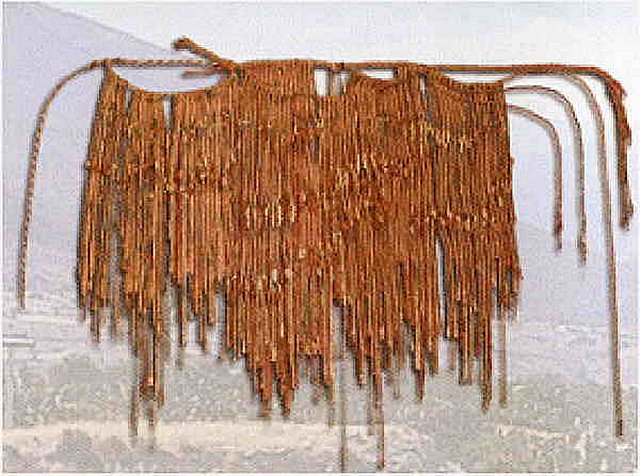
The cords were knotted in such a way to represent the decimal system and were fastened at close intervals along the principal strand of the quipus. Thus an important message relating to the progress of crops, the amount of taxes collected, or the advance of an enemy could be speedily sent by the trained runners along the post roads…” (Hiram Bingham, the American explorer who found the ruins of Machu Picchu in 1911, wrote in ‘Lost City of the Incas’.)
Unfortunately, only a few ‘quipu’ arrangements survived to the present time. The truth is that most of the copies were burned. When the Spaniards conquered the Inca State, the Catholic Church ruled that ‘quipu’ are the work of Satan, as such, must therefore be destroyed, and so the Spanish conquistadors did in the 16th century.
Approximately 200 of them dating no earlier than about 650 AD have been found and still can be analyzed.
See also:
Story Of Atahualpa: The Last Emperor Of The Inca Empire
Inca Llajta: Largest And Most Impressive Inca Complex In Bolivia
Today, the quipu is considered the world’s first three-dimensional language and deciphering the Inca’s encoded writings can be compared to decrypting of ancient egyptian hieroglyphs.
In 2005, the American magazine “Science” published a sensational discovery that ‘quipu’ system was not only memorize numbers, but probably non-numeric data – geographical names, names, and more.
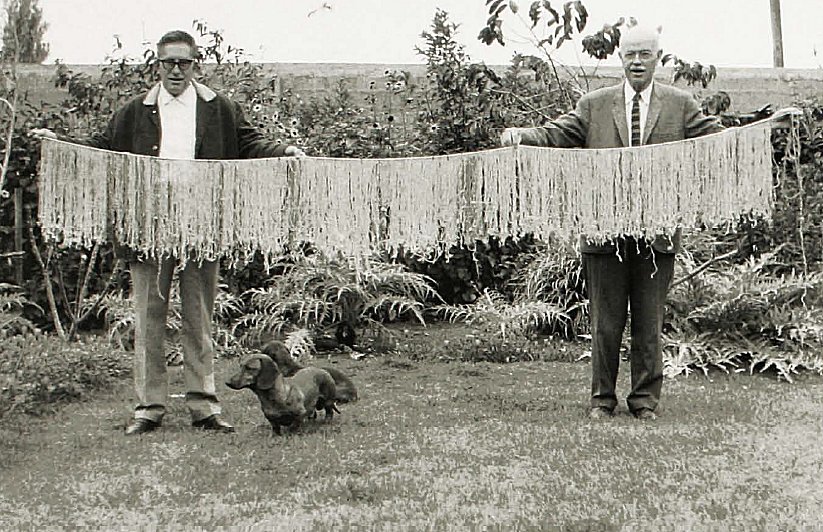
With ‘quipu’ system the Inca could also perform complicated calculations and it sufficed for the organization of the whole empire’s economy. However, some believe that it was much more than a mere calculating device.
In 1996 a manuscript called Historia et Rudimenta Linguae Piruanorum came to light in Italy among the family possessions of a Naples historian.
This fascinating document – supposedly written in the early 17th century by Jesuits – contains a fragment of ‘quipu’ along with an explanation of how quipu was used to encode spoken language. According to the manuscript, “ideograms” or symbols with well-known meaning from Incan art were used as either phonograms (to represent sounds) or logograms (to denote words).
In ‘The Ancient Civilizations of Peru‘, J. Alden Mason (among other researchers) suggest yet another purpose of ‘quipu’, namely – historical record of the whole empire.
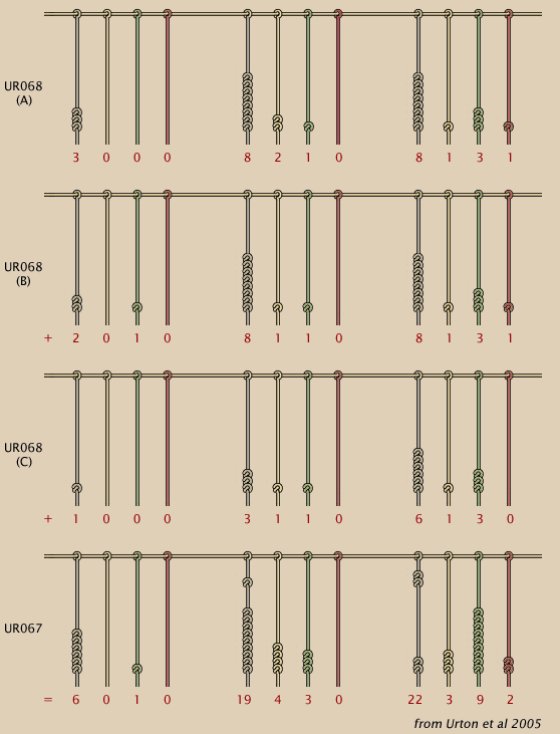
It worth to say is that certain Chinese chronicles mention certain emperor’s wish to to replace the ideographic script by one based on knots.
It indicates the existence of links between pre-Columbian America and Asia.
According to Baron Nordenskiold, an expert from Sweden, ‘writing need not to be the only way expressing thought’. Nordenskiold believed that ‘quipu’ might represent prophecies and horoscopes as well as mathematical calculations.
Modern mathematicians, in fact, consider the Inca knots as one of the most mysterious phenomena that can occur in extremely large number of dimensions!
Some of the simplest kinds of knots have been already deciphered. It has not been found a universal method to decipher all the sacred ‘quipu’ records of Inca.
Many discoveries are yet to be made and time will tell what secrets quipus are holding.
Copyright © MessageToEagle.com. All rights reserved. This material may not be published, broadcast, rewritten or redistributed in whole or part without the express written permission of MessageToEagle.com


